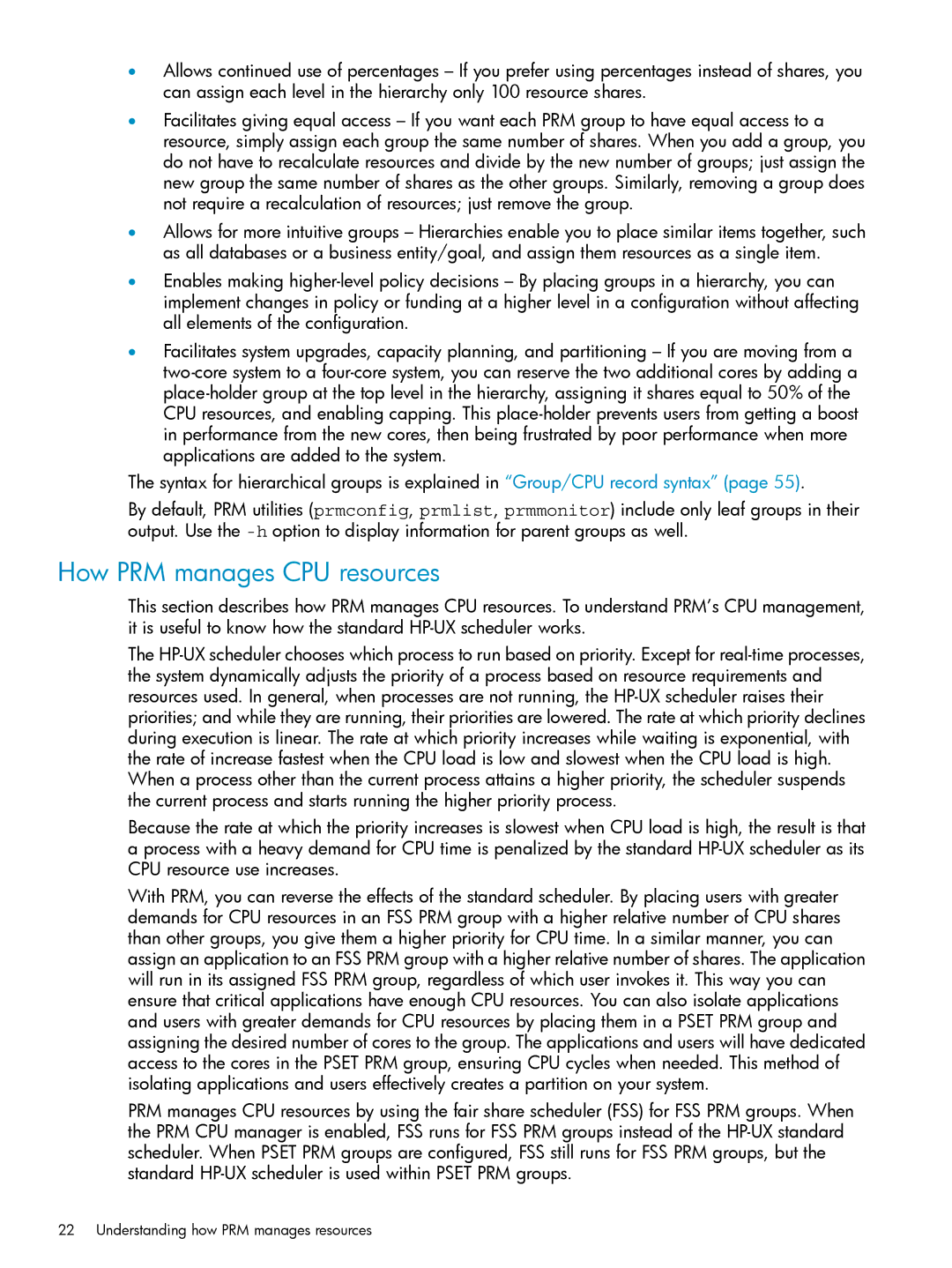•Allows continued use of percentages – If you prefer using percentages instead of shares, you can assign each level in the hierarchy only 100 resource shares.
•Facilitates giving equal access – If you want each PRM group to have equal access to a resource, simply assign each group the same number of shares. When you add a group, you do not have to recalculate resources and divide by the new number of groups; just assign the new group the same number of shares as the other groups. Similarly, removing a group does not require a recalculation of resources; just remove the group.
•Allows for more intuitive groups – Hierarchies enable you to place similar items together, such as all databases or a business entity/goal, and assign them resources as a single item.
•Enables making
•Facilitates system upgrades, capacity planning, and partitioning – If you are moving from a
The syntax for hierarchical groups is explained in “Group/CPU record syntax” (page 55).
By default, PRM utilities (prmconfig, prmlist, prmmonitor) include only leaf groups in their output. Use the
How PRM manages CPU resources
This section describes how PRM manages CPU resources. To understand PRM’s CPU management, it is useful to know how the standard
The
Because the rate at which the priority increases is slowest when CPU load is high, the result is that a process with a heavy demand for CPU time is penalized by the standard
With PRM, you can reverse the effects of the standard scheduler. By placing users with greater demands for CPU resources in an FSS PRM group with a higher relative number of CPU shares than other groups, you give them a higher priority for CPU time. In a similar manner, you can assign an application to an FSS PRM group with a higher relative number of shares. The application will run in its assigned FSS PRM group, regardless of which user invokes it. This way you can ensure that critical applications have enough CPU resources. You can also isolate applications and users with greater demands for CPU resources by placing them in a PSET PRM group and assigning the desired number of cores to the group. The applications and users will have dedicated access to the cores in the PSET PRM group, ensuring CPU cycles when needed. This method of isolating applications and users effectively creates a partition on your system.
PRM manages CPU resources by using the fair share scheduler (FSS) for FSS PRM groups. When the PRM CPU manager is enabled, FSS runs for FSS PRM groups instead of the
22 Understanding how PRM manages resources
